The persimmon season is just a few weeks away and things are looking good despite the problems producers have had to deal with due to the uncertain weather.
In Spain, for example, the campaign is looking promising after last year's drop in production (50%).
To better understand the situation in Italy, FreshPlaza talked to Vito Vitelli, agronomist and mind behind Melotto®, a networking project to support the persimmon production chain.The brand currently gathers 30 producers covering over 200 hectares in total mostly located in central and southern Italy.
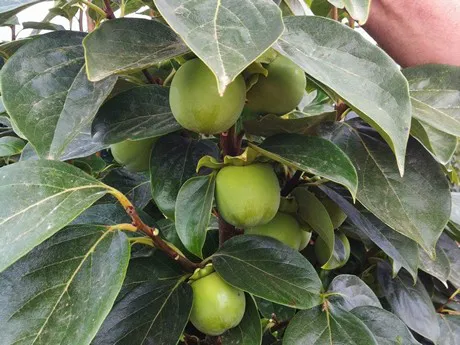
"Volumes are at least 30% lower than last year but, at the same time, quality is better. The abundant rain has made plants grow, leading to considerable drops in summer. The fruit on the trees is growing well, also when it comes to grades."
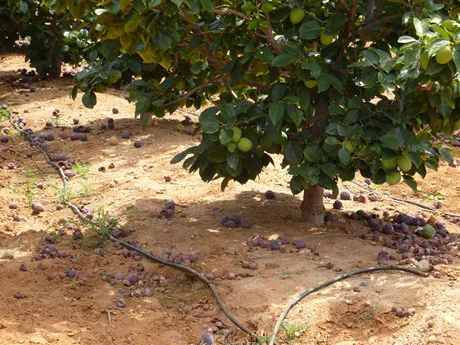 Fruit drops over the past few months.
Fruit drops over the past few months.
"While persimmons are extremely resistant to harmful organisms, they are very sensitive to weather events and wind in particular. Those who employ windbreaks or cover systems definitely have fewer problems as windy situations leads to small leaves, undeveloped plants, small fruits and even drops. Excessive rain, especially in spring, also leads to drops. What is more, leaves and fruits are damaged where it hailed."
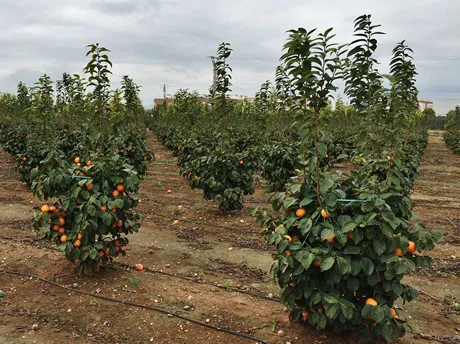
"Crops are in good health, at least for what concerns our circuit. As companies part of the Melotto® network,we follow the protocol that enables us to perform targeted preventive interventions. The phytosanitary situation is also good: thinning meant plants were well ventilated and sunlit and we managed to avoid whitefly attacks. We also used the potassium salts technique followed by marseille soap to remove the waxy substances that protect the insect in the young phases."
"As for the Mediterranean fruit fly, we are controlling attacks via mass trapping and also use do-it-yourself protein food bait (around 100 2-litre bottles per hectare)."
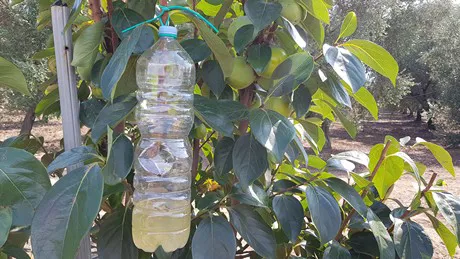 Above: protein food bait. Mediterranean fruit flies inside the traps.
Above: protein food bait. Mediterranean fruit flies inside the traps.
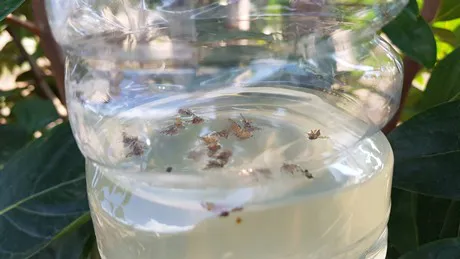
"Harvesting operations in Italy will start in early October with Caltanissetta and Agrigento (Sicily). The drop in overall volumes will be compensated by the excellent grades (currently 250 gr) Commercialization usually occurs at 350/400 gr."
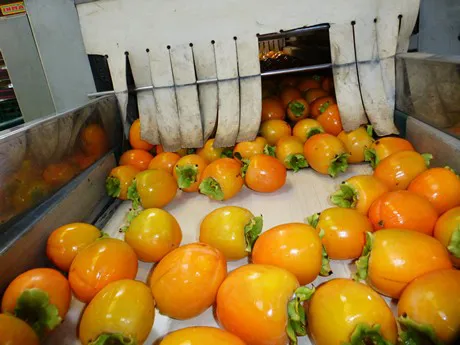
"The processing warehouse is located in Rome. It took 4-5 years to implement the entire system but the complete circuit, which starts in nurseries and reaches distribution chains is taking shape so that all actors within the chain can start working together."
Contacts:
Vito Vitelli - agronomist
Cell.: +39 339 2511629
Blog: vitovitelli.blogspot.com
